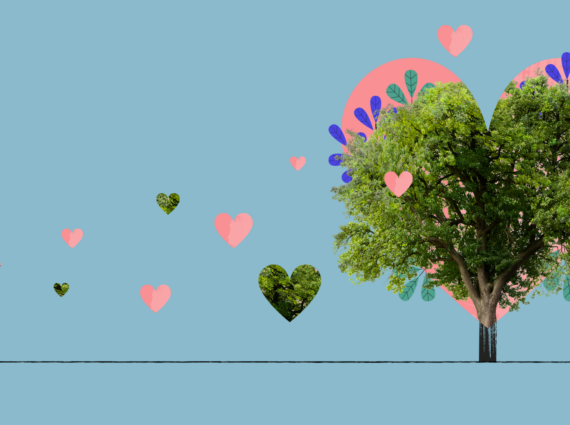Cycling is the most efficient mean of transport powered by human muscles. Thanks to cycling, there are also many health benefits ranging from improved fitness and silhouette, better body oxygenation, and increased lung capacity. By cycling to work, you can also save money on petrol and the time while stuck in a traffic jam. Cycling is a great way to spend your free time. For example, you can get to know your surroundings better or have more contact with nature.
Cycling is actually really healthy for the planet too. You can calculate the precise amount of greenhouse gas emissions saved by cycling instead of driving a car. If you cycle eight kilometres, you will save 2.12 kilograms of CO2 emissions. This will amount to 1.32 kg of CO2 after five kilometres and about half a kg of greenhouse gases after two kilometres. Given that the one-way trip to the office is 8 kilometres, choosing to cycle, say just once a week, will save nearly 17 kilograms of CO2 emissions per month. That’s over 200 kilograms of greenhouse gas emissions per person per year! Cycling to work every day individually could prevent over a tonne of CO2 emissions annually. In other words, that’s as much as 1/8 of the average annual emissions of a Polish person!
Bicycles have had a significant impact on humanity for many reasons. National Bike Month, celebrated in May, was established in 1956 to honour bicycles and all the wonderful things that can be accomplished with them.
Which bike to choose? Match your needs.
Bike Month can be an excellent opportunity to jump on the saddle. Choose from a wide range of bikes if you’re thinking of buying one, both new and second-hand. Find out which bike is right for you!
- MTB bicycle
MTB is the universal type of bike in its recreational version and perhaps the first choice of people who start their adventure with bicycles. It is simply a Mountain Terrain Bike. Thanks to wide tyres and good cushioning, you can cover almost any terrain. The bike’s geometry is important, however. A recreational MTB requires riding in a leaning position, which puts more strain on the arms and can cause discomfort.
There are also XC (cross-country), downhill, and enduro bikes in the mountain bike category. In a nutshell, the former is designed for racing on trails with diverse surfaces. Downhills are suitable for fast riding on demanding, steep trails. The enduro has good manoeuvrability and shock absorption, ideal for steep slopes, bumpy terrain, and uphill riding.
- Cross bike
Perfect for those who want to move around town but are also looking for a bike for easy, relatively undemanding forest tours. The lightweight construction, narrow tyres with fine tread and upright riding position make this bike comfortable to ride even for beginners.
Cross bikes usually do not come with additional equipment such as a mudguard or luggage rack, but these can be purchased additionally.
- Touring bike
Touring bicycle is suitable for longer trips outside the city, but still on the hard-packed ground, especially if the bike has suspension. People often call it a “cross bike with accessories” because these bikes are equipped with mudguards, racks, feet, and even dynamo lights and sometimes a pump for high-end models. This makes a touring bike a little heavier than a cross bike, yet still comfortable to ride.
- City bike
Here’s a bit of a tricky one. City bikes are commonly classified as a category of bicycles, but they refer to all bikes that are made for city use. A city bike would be, for example, a cross or a touring bike, but also a Dutch-style bike or a folding bike.
The classic Dutch-style bike is built for maximum comfort over a short distance, with an upright position and elbows lowered almost alongside the body. The frame is massive, and the wheelbase is long. As a result, the bike is stable but not very manoeuvrable and requires space to accelerate and turn around.
Folding bikes provide the advantage of folding and unfolding in a few minutes. Thanks to this, they can be conveniently transported on public transport (as various situations happen) and stored in the office or flat. On the other hand, small wheels are not comfortable while riding in the woods, which should be considered.
- Road bike
A road bike is a sports bike for riding over smooth surfaces and asphalt roads. It is designed to cover long distances in a short time. The light, stiff, and non-suspended frame and thin tyres improve aerodynamics and fast riding. A road bike, however, is not suitable for bumpy forest roads. The construction of this type is designed for fast riding and requires a leaning position. In addition, the narrow tyres are easy to damage.
Get on your bike and into eco-friendly habits!
Cycling can significantly reduce your carbon footprint. You can find out the number of saved emissions with TerGo’s emissions calculator! Just take a few minutes and answer simple questions about your annual CO2 emissions, including transport, lifestyle, household, and travel. That way, you’ll know what else you can do to improve the planet’s health!
You can find proven ways and tips for making greener choices on the TerGo blog. Together we can do more!





